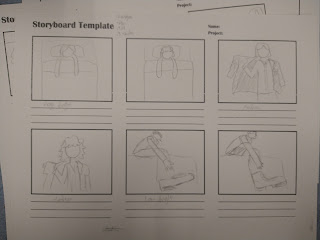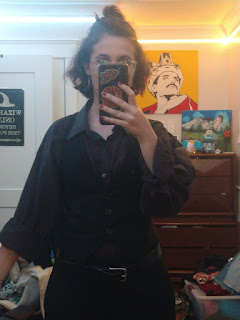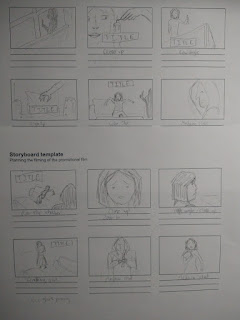Sooo... This is how the story goes...
Scenes 1 and 2: Both scenes serve the same purpose: start the day’s of Video and Radio Star. The scene will be high and medium close-up. The camera is going to be above the characters as they wake up in the morning. It parallels their routines and creates a normal begging to a playful and happy song. The use of the high angle
Scenes 3 and 4: These scenes also parallel each other. It is to display the differences between the characters and how they are similar. They depict Video and Radio Star getting ready for the day. It adds to the normalcy that we are trying to convey for the first part of the music video. The shots will be medium shots to really show what the characters are wearing to show how different they are from each other.
Scene 5 and 6: The point of the last six scenes are to parallel each other and show how the two characters act. This will be a low angle as they both put on their shoes.
Scene 7: The medium-close, two shot of the two backup singers introduces them as characters, while the over the shoulder shot still provides some mystery of their identity and suggests that they are not as important. The two characters getting ready in front of a mirror also adds to the seemingly innocent and playful nature of the video.
Scene 8: Just like in the previous scene, the radio technician is shown briefly in an over the should shot to draw attention to the vinyl set up and not them as a character. The medium-close shot allows for less of their body to be show and more of the sound booth set up.
Scene 9: This is an important medium shot that shows radio star and her backup singers in the sound booth singing. This happens during the chorus which makes this lengthy scene a climax to the story. The pan movement is able to capture all characters and their surrounding environment.
Scene 10: This scene is to add suspense. It is a close up on Video’s hand as they put on gloves. This scene adds suspense to what is to come next. Adding to the sinister feeling of the video. This is where the video takes a turn in the way the plot is going. It shows that Video has an alternative motive in life.
Scene 11: This tracking shot shows an important piece of narrative in which radio star reads a letter and leaves out a door. The tracking shot is better suited in suggesting that radio star has to leave the booth for an urgent meeting. This is shown in a medium and medium close shot as the character moves different distances away from the camera during the scene.
Scene 12: This scene shows video finally killing radio star. This tilt movement scene is first shown as a medium-close shot of the top of the characters but moves down to their feet while a murder is being implied off screen. When the camera tilts back up, we see radio star on the ground (dead) and video covered in blood.
Scene 13: The final scene is a Dutch movement of a close up shot of video. The twisted angle of the shot with such close proximity to videos bloody face adds to the shock appeal of this seemly innocent music video turned violent. The fade out of the cheerful music also adds to the twisted and creepy feeling at the end of the music video.






Comments
Post a Comment